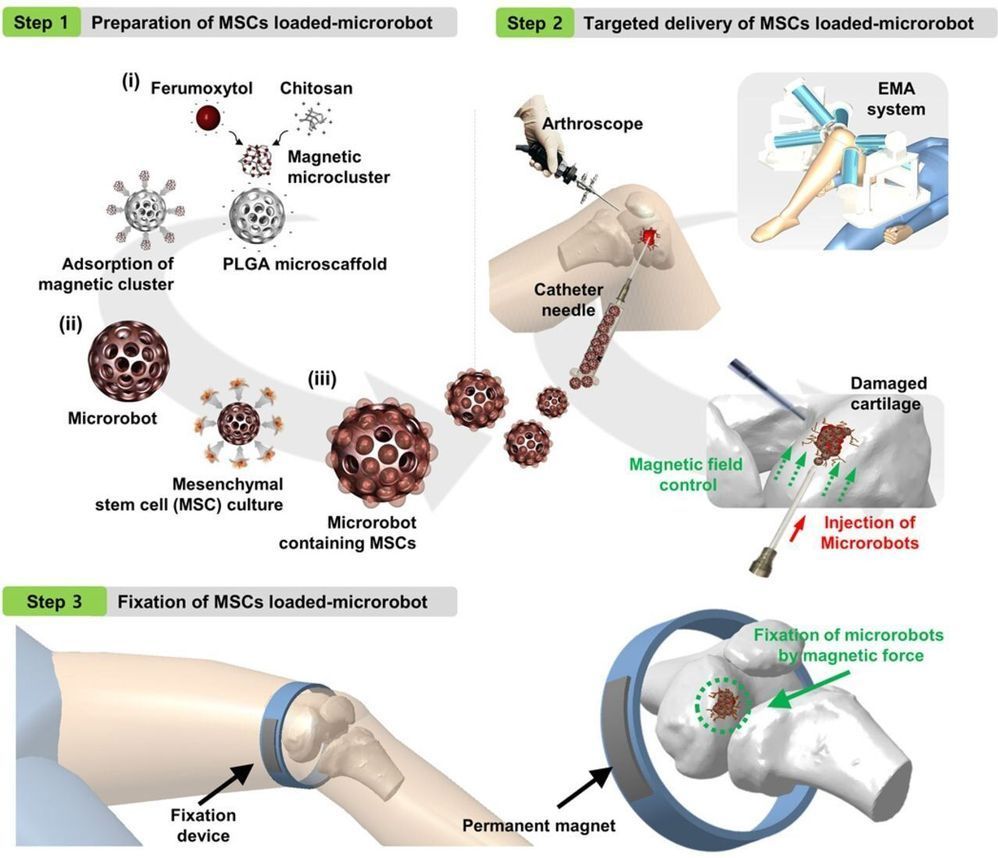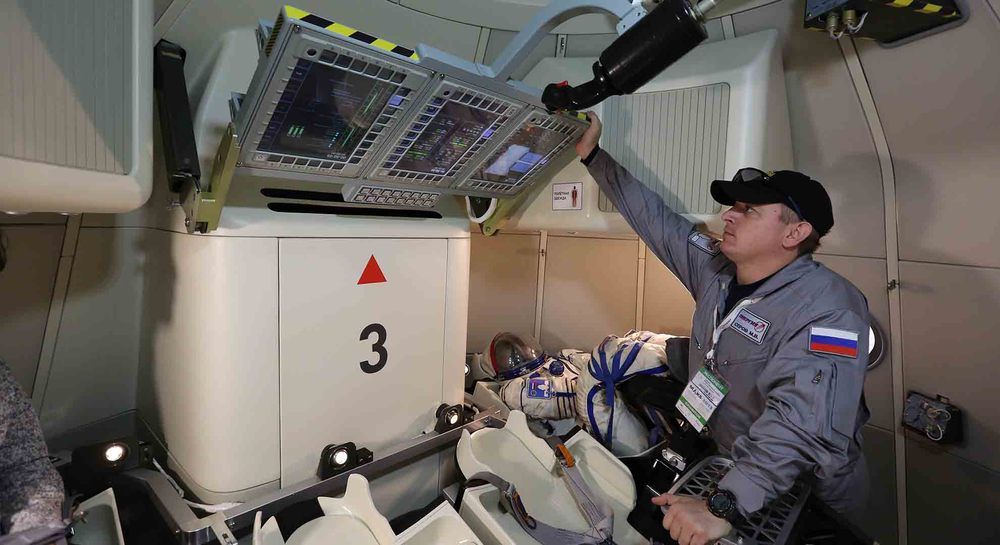A team of researchers affiliated with multiple institutions in China and one in Korea has developed a micro-robot system that regenerated knee cartilage in rabbits. In their paper published in the journal Science Advances, the group describes their system and how well it worked.
In many developed countries, the population is growing older, which means aging-related health conditions are on the rise. One such ailment common in older people is degeneration of the cartilage in the knees and hips. When this happens, a common treatment is replacing the knee or hip joint with an artificial device. In this new effort, the researchers have found a better way to handle the problem—regrowing the cartilage.
Prior research has shown that mesenchymal stem cells found in bone marrow and fat can be coaxed into growing into cartilage cells. And researchers have also found that stem cells can be used to repair damaged cartilage. The challenge is placing the cells in the body where they are needed and keeping them in place until they attach to the surrounding tissue. In this new effort, the researchers have created a system that was able to overcome these hurdles—at least in rabbits.







